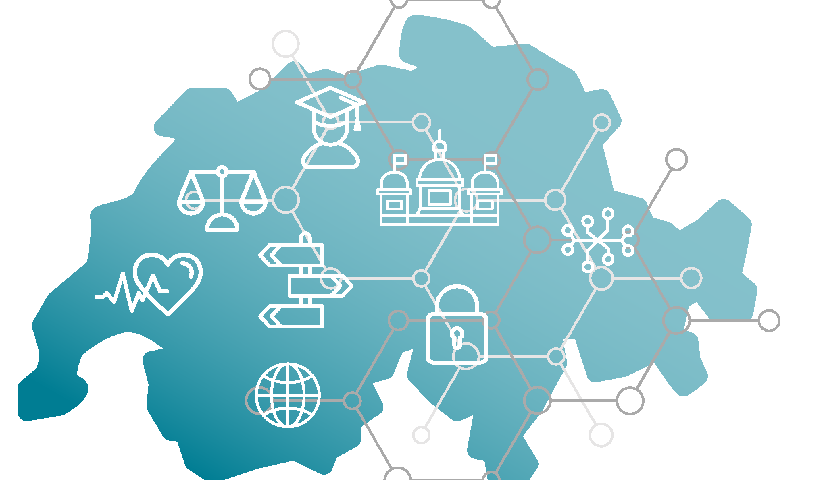
Instagram Live: R&D Centers in the 5th Industriel Revolution
December 30, 2023
The most promising Swiss inventions of 2023
December 30, 2023The digital strategy of Switzerland in 2023 has been formulated as a guideline for digital transformation. The Swiss Federal Council determines the trends of digital transformation at the federal level 2 to 3 times a year. Switzerland's 2023 strategy in the field of digital transformation has been formed with the slogan (Digital First) and with the aim of preserving and promoting the interests of its country by explaining what situations are created by digital transformation so that people have the most benefit in the long term. Switzerland has one of the highest ranks in terms of digitization and innovation among European countries. Switzerland's digital transformation strategy has been formed around 5 main axes with a long-term view. These axes are targeted in line with the general guidelines of the European Union in the field of digital transformation.
Digital Innovation
 Although the word entrepreneurship has been used since around 1700 AD, Joseph Schumpeter, by expressing his theory of economic development in 1934, regarding the central role of entrepreneurs in creating profit, was able to create a fast and new path in this field, as far as the nickname Father took up entrepreneurship. The concept of innovation is so mixed with the theme of entrepreneurship that practically no value can be attached to entrepreneurship without innovation.
Although the word entrepreneurship has been used since around 1700 AD, Joseph Schumpeter, by expressing his theory of economic development in 1934, regarding the central role of entrepreneurs in creating profit, was able to create a fast and new path in this field, as far as the nickname Father took up entrepreneurship. The concept of innovation is so mixed with the theme of entrepreneurship that practically no value can be attached to entrepreneurship without innovation.
It should be noted that innovation no longer means providing new goods and services to the market, but the traces of innovation can also be seen in the management of the organization and the market. After the fourth industrial revolution with the title of digital transformation, the unique position of digitization of all management processes, including digital innovation, was established.
In the definition of digital innovation, it is possible to refer to the management of innovation processes in the digital context, meaning the use of digital technologies to increase the efficiency of organizations. The first studies of this field were formed by Yu and his colleagues in 2010, which, in addition to the digital production of physical products, also includes innovations based on information technology. The concept of digital innovation has progressed to the point that in the new reports of determining the country's innovation index, digital innovation is considered one of the most important indicators and with the highest score.
In the 2023 report of the Global Innovation Index, Switzerland has been ranked first for several years in a row. In this article, an attempt has been made to take a look at the strategy and digital innovations of Switzerland in order to highlight the importance of digital innovation and its role in raising the level of economic growth and development of countries.
The digital strategy of Switzerland in 2023 has been formulated as a guideline for digital transformation. The Swiss Federal Council determines the trends of digital transformation at the federal level 2 to 3 times a year. Switzerland's 2023 strategy in the field of digital transformation has been formed with the slogan (Digital First) and with the aim of preserving and promoting the interests of its country by explaining what situations are created by digital transformation so that people have the most benefit in the long term. Switzerland has one of the highest ranks in terms of digitization and innovation among European countries. Switzerland's digital transformation strategy has been formed around 5 main axes with a long-term view. These axes are targeted in line with the general guidelines of the European Union in the field of digital transformation. To measure each of these axes, two main evaluation indicators are also considered, which are as follows:
1- Education and skills:
People, businesses and public administration that should have enough skills to benefit from new technologies.
1-1- The percentage of sharing advanced digital skills with people (41% in 2021)
1-2- The percentage of IT specialists among the total Swiss workforce (1.5% in 2021).
2- Trust building and security:
Swiss people should enjoy safety and privacy in the digital environment.
2-1- The number of cyber threats to Swiss people in the digital space (21,714 threats in 2021)
2-2- The number of cybercrimes in the Swiss digital space (30,351 crimes in 2021)
3- Digital environmental framework:
Businesses and society should be able to have a reliable framework in the digital space.
1-3- The percentage of participation of new Swiss companies and startups in the information technology industry (5.8% in 2019)
3-2- Switzerland's rank in global digital competitiveness in IMD (rank 5 in 2022)
4- Infrastructures:
The public administration should be able to strengthen the digital infrastructure in Switzerland in a stable and reliable way.
4-1 - Percentage of 5G network coverage in all federal state (74% for 2021)
4-2- Percentage of public access to government data (7541 data sets for 2022)
5- Digital public services:
The public administration should provide its services in a public way and for the public.
5-1- Availability percentage of government online services (63% for 2022)
2-5- The percentage of digital services that the government provides for businesses (62% for 2022)
The focus of Switzerland in the field of digital transformation is the following for 2023:
1- Digitization of health services
2- Digitization of legal and legal issues
3- Digital governance
Due to the very diverse nature of digital transformation, it is hoped that we will be able to discuss more with the benefit of a series of consecutive meetings in the near future around the very necessary and attractive topic of digital transformation.
By Dr. Ali Bagheri



